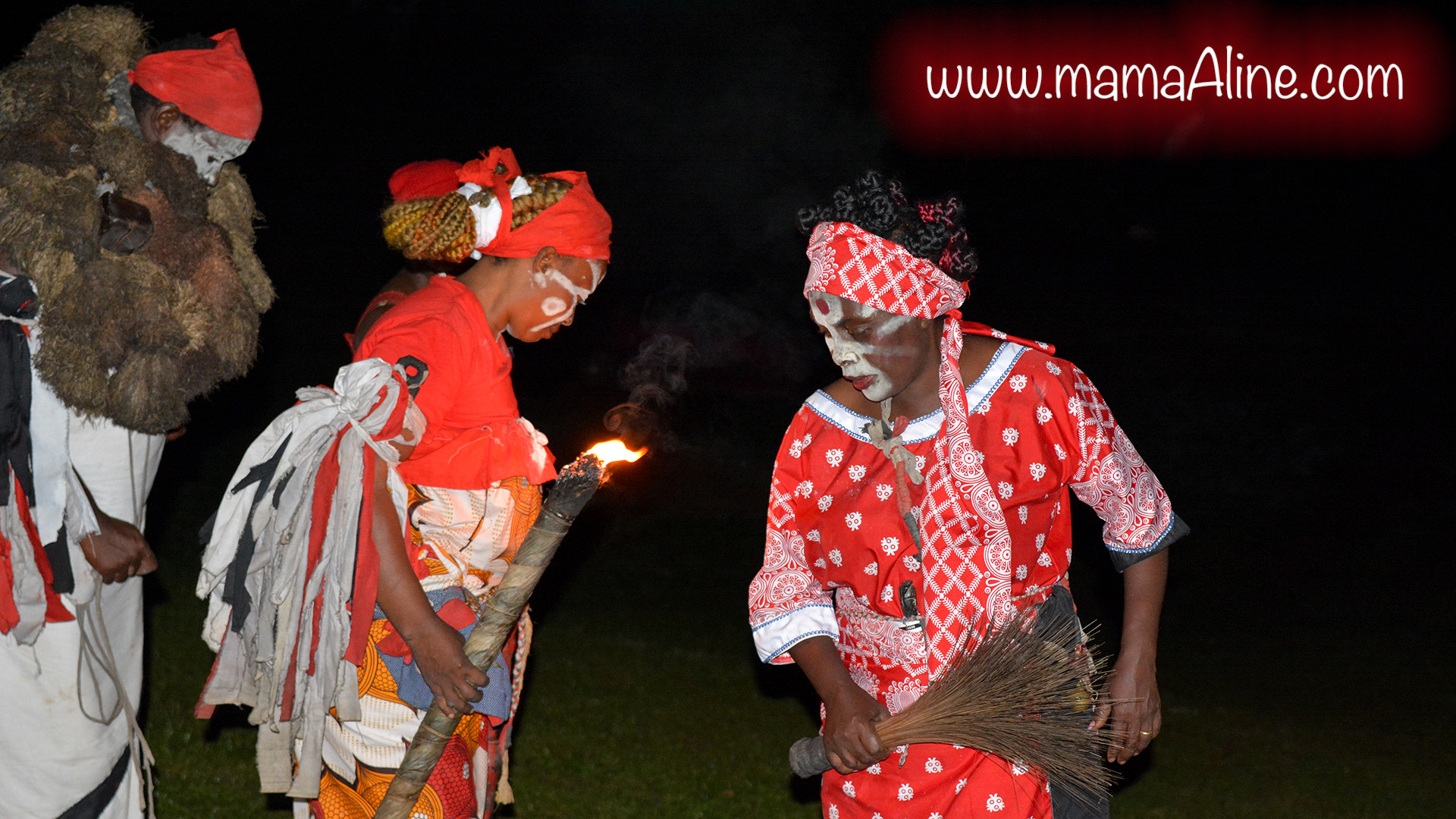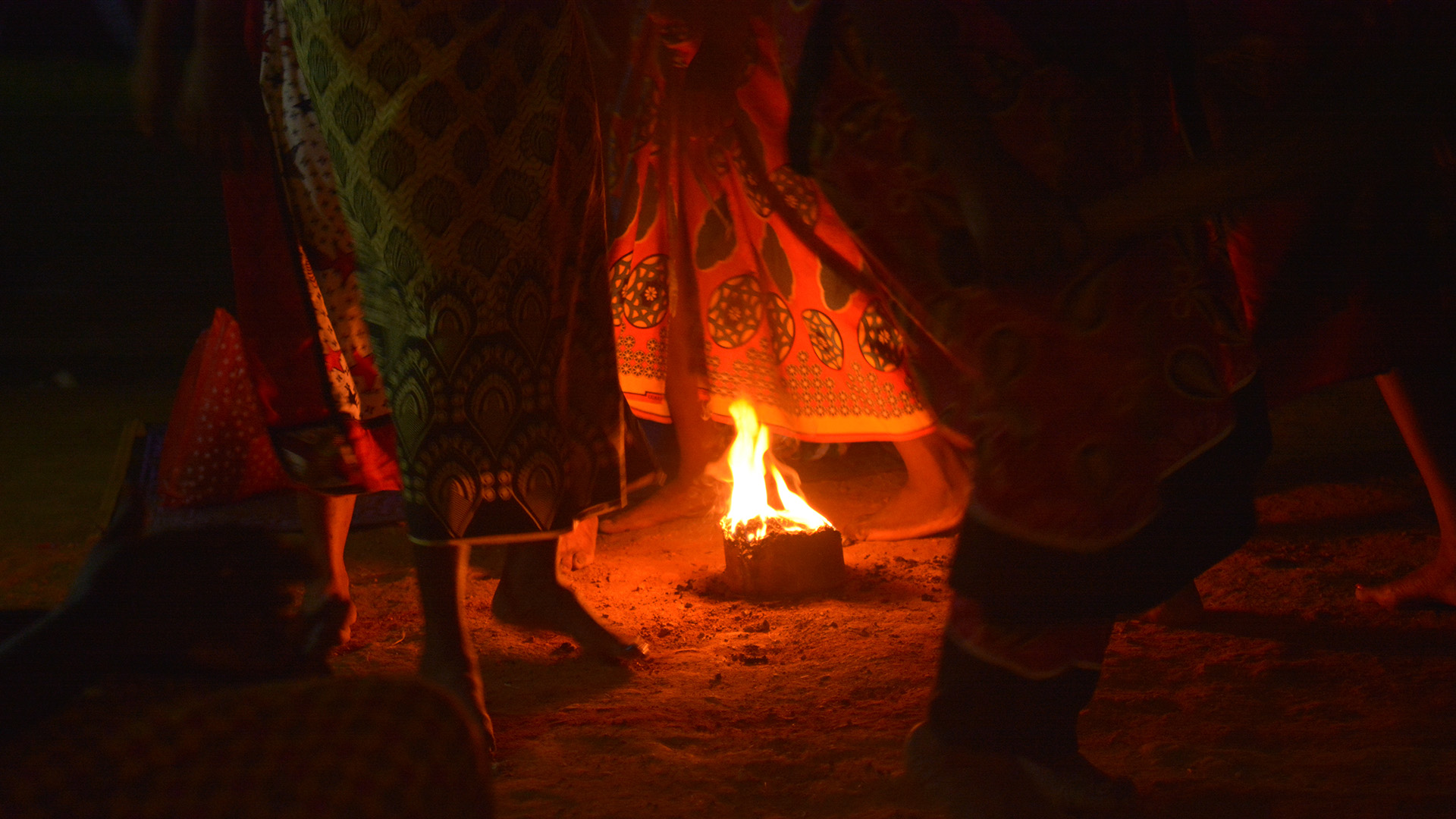1. Aline’s Lineage & Calling
Aline Lydie (Mama Aline), born in Mouilla to parents rooted in Nzebi and Tsogo traditions, was immersed in Bwiti from childhood. She assisted her healer-mother from the age of nine and, after a childhood illness at twelve, experienced her first Elombo initiation—both healing and awakening her sense of purpose. Over the years, she completed multiple Bwiti rites (Elombo, Ologuo, Mboumba Yano, Niembet, Niembe, Maboundi), becoming a Nima (initiated elder), and today guides spiritual seekers from the Netherlands, UK, Germany, USA, Japan, Canada, Spain, Italy, Greece and many other locations with compassion and inclusivity, passing on ancestral traditions.
Her husband, Jean Claude (Papa Mboka), likewise an initiated Nganga, supports her ceremonies and ensures sacred integrity—stepping in during instances requiring masculine spiritual intervention.
2. The Village & Its Role
Nestled near Lambaréné in central Gabon, Mama Aline’s Mitsogho Bwiti village consists of a temple and and stone house with some smaller shacks and a couple of buildings for the ceremonies. This spiritual space serves as both sanctuary and learning environment—deeply rooted in ancestral rites, natural rhythms, and community belonging.
An extended spiritual family plays supporting roles: her children (some poised to become musicians or future ngangas), elders, apprentices, translators, musicians, gardeners, community leaders, and even project coordinators—forming a living village ecosystem.
3. The Essence of Bwiti
Originating with Babongo pygmies and evolving through tribes like Mitsogho, Apindji, Fang, Eshira, Kota, and Punu, Bwiti is an ancient Gabonese spiritual path—a “Tibet of Africa”—rooted in the ceremonial use of iboga.
Bwiti’s cornerstone rituals include Dissumba (puberty rites) and Missoko (healing ceremonies involving smaller iboga doses). Over time, branches like Missoko Ngondet, Miobet, Senguedia, and Moutakombi have emerged—each with distinct emphases—yet all share a focus on healing, ancestral communion, and spiritual initiation.
Bwiti has survived colonial Christian suppression through adaptive syncretism. Its resurgence post-1960 under President M’ba allows practitioners like Mama Aline’s village to preserve pure Mitsogho-Bwiti traditions.
4. The Plant Medicine: Iboga
Iboga (Tabernanthe iboga), a rainforest shrub native to Gabon and Cameroon, serves as Bwiti’s sacred medicine—a “grandfather of plant medicines”. The bark contains ibogaine (~80% of its alkaloid profile) and other synergistic compounds (e.g. voacangine, harmaline).
As both rite of passage and healing catalyst, iboga dissolves trauma, clears karmic patterns, stimulates cognitive renewal (neurogenesis), decalcifies the pineal gland, and harmonizes libido. Used fresh during ceremonies on Mama Aline’s land, it maximizes potency and spiritual effectiveness—far beyond what dried or processed forms can yield.
5. Kundalini: The Fire Within
Bwiti refers to the iboga trance as a primal spiritual energy—comparable to Eastern kundalini (Shakti)—awakening from the base of the spine, transcending ego, and igniting inner transformation.
This energy dissolves blockages across the body’s chakra-like centers—the perineum (sexual energy), the heart (emotional wounds), and the mind (identity illusions)—burning them away in a transformational purgation.
Iboga accelerates spiritual growth rapidly—faster than tantric or yogic paths—while cautioning integration to avoid spiritual overwhelm.
6. Integrative Meditation Practices
Mama Aline champions blending iboga with proven meditative tools:
- Vipassana: Deep emotional witnessing until dissolution
- Self-Inquiry: “Who am I?” practice to trace and release self-concepts
- Breathwork (Pranayama/Kriya Yoga): Energizing block release, often coupled with mirror work
These techniques synergize with iboga’s energetic wake-up call to guide participants toward full realization (the Nima state)—a state traditionally achieved through lifetimes of practice.
7. Ceremony Structure & Safety
The ceremonial rhythm includes:
- Pre-ceremonial rest and orientation—psychological and physical attunement
- Experience with fresh iboga—immersion in the trance
- Integration—rest, community bonding, and emergence into a renewed life
Ceremonies follow strict safety protocols: medical screenings for heart, liver, and metabolic health; careful dosage; and ongoing support to navigate the intense Kundalini process.
Microdosing protocols offer gentler entry points (e.g. 1 g for two days with a day of rest), allowing expansion at a slower pace.
8. Initiations & Transformation
Initiatory rites are profound soul challenges—transformations through reconnection with ancestral and cosmic intelligence. Some, like Dissumba and Elombo, are age-related ceremonies; others like Niembe, Ologuo or Mboumba Yano invoke elemental, water or emotional spirits.
Guided by a Nima, initiates navigate inner labyrinths, emerge with new names and social roles, and often choose to become healers themselves—continuing the lineage.
9. Community, Lineage & Projects
Mama Aline’s village sustains itself through intergenerational participation: children are trained in music and healing; apprentices support visitors; community members learn from her—and the culture remains alive.
They also run community projects—gardens, clean water access, mosquito control—supported by a Dutch foundation (Thriving Gabon).
10. Integration in Our World
Bwiti’s resonance is growing globally, with ceremonies now held in countries like Costa Rica, Mexico, Portugal, and the Netherlands—while Gabon remains the heart of the tradition.
Mama Aline envisions a future where traditional Bwiti, meditation, Kundalini, and Dzogchen coalesce—offering a comprehensive spiritual path rooted in respect, healing, and evolution.
Final Vision
This “website” offers a unified guide: lineage, villages, plant medicine, energy, practice, ceremony, and community—all interwoven into an evolutionary path of self-discovery and collective healing.




